High-Precision Measurement of Sea Surface Temperature with Integrated Infrared Thermometer
Abstract
1. Introduction
2. Materials and Methods
2.1. Establish the Conversion Relationship between Temperature and Radiation Quantity
2.2. Principle of Measuring Sea Surface Temperature
3. Experiments and Performance Testing
3.1. Improvement of Performance Test Experiment
3.2. Observing the Water Surface Experiment
4. Discussion and Conclusions
Author Contributions
Funding
Institutional Review Board Statement
Informed Consent Statement
Data Availability Statement
Acknowledgments
Conflicts of Interest
References
- Donlon, C.J.; Minnett, P.J.; Gentemann, C.; Nightingale, T.J.; Barton, I.J.; Ward, B.; Murray, M.J. Toward Improved Validation of Satellite Sea Surface Skin Temperature Measurements for Climate Research. J. Clim. 2002, 15, 353–369. [Google Scholar] [CrossRef]
- Minnett, P.J.; Knuteson, R.O.; Best, F.A.; Osborne, B.J.; Hanafin, J.A.; Brown, O.B. The Marine-Atmospheric Emitted Radiance Interferometer: A High-Accuracy, Seagoing Infrared Spectroradiometer. J. Atmos. Ocean. Technol. 2001, 18, 994–1013. [Google Scholar] [CrossRef]
- Chelton, D.B.; Wentz, F.J.; Gentemann, C.L.; de Szoeke, R.A.; Schlax, M.G. Satellite microwave SST observations of transequatorial tropical instability waves. Geophys. Res. Lett. 2000, 27, 1239–1242. [Google Scholar] [CrossRef]
- Robinson, I.S.; Donlon, C.J. Global Measurement of Sea Surface Temperature from Space: Some New Perspectives. J. Atmos. Ocean Sci. 2003, 9, 19–37. [Google Scholar] [CrossRef]
- Stuart-Menteth, A.C.; Robinson, I.S.; Donlon, C.J. Sensitivity of the diurnal warm layer to meteorological fluctuations. Part 2: A new parameterisation for diurnal warming. J. Atmos. Ocean Sci. 2005, 10, 209–234. [Google Scholar] [CrossRef]
- Rice, J.P.; Butler, J.J.; Johnson, B.C.; Minnett, P.J.; Maillet, K.A.; Nightingale, T.J.; Hook, S.J.; Abtahi, A.; Donlon, C.J.; Barton, I.J. The Miami2001 Infrared Radiometer Calibration and Intercomparison. Part I: Laboratory Characterization of Blackbody Targets. J. Atmos. Ocean. Technol. 2004, 21, 258–267. [Google Scholar] [CrossRef][Green Version]
- Thomas, J.P.; Knight, R.J.; Roscoe, H.K.; Turner, J.; Symon, C. An Evaluation of a Self-Calibrating Infrared Radiometer for Measuring Sea Surface Temperature. J. Atmos. Ocean. Technol. 1995, 12, 301–316. [Google Scholar] [CrossRef][Green Version]
- Barton, I.J.; Minnett, P.J.; Maillet, K.A.; Donlon, C.J.; Hook, S.J.; Jessup, A.T.; Nightingale, T.J. The Miami2001 Infrared Radiometer Calibration and Intercomparison. Part II: Shipboard Results. J. Atmos. Ocean. Technol. 2004, 21, 268–283. [Google Scholar] [CrossRef][Green Version]
- Reynolds, R.M. A Brief Review of Sea Surface Infrared Radiometry as it Relates to the ISAR (Infrared Sea Surface Temperature Autonomous Radiometer) 1. 20 February 2007. [Google Scholar]
- Donlon, C.; Robinson, I.; Reynolds, R.; Wimmer, W.; Fisher, G.; Edwards, R.; Nightingale, T. An Infrared Sea Surface Temperature Autonomous Radiometer (ISAR) for Deployment aboard Volunteer Observing Ships (VOS). J. Atmos. Ocean. Technol. 2008, 25, 93–113. [Google Scholar] [CrossRef]
- Jessup, A.T.; Branch, R. Integrated Ocean Skin and Bulk Temperature Measurements Using the Calibrated Infrared In Situ Measurement System (CIRIMS) and Through-Hull Ports. J. Atmos. Ocean. Technol. 2008, 25, 579–597. [Google Scholar] [CrossRef]
- Branch, R.; Jessup, A.T.; Minnett, P.J.; Key, E.L. Comparisons of Shipboard Infrared Sea Surface Skin Temperature Measurements from the CIRIMS and the M-AERI. J. Atmos. Ocean. Technol. 2008, 25, 598–606. [Google Scholar] [CrossRef]
- Reynolds, R.M.; Miller, M.A.; Bartholomew, M.J. Design, Operation, and Calibration of a Shipboard Fast-Rotating Shadowband Spectral Radiometer. J. Atmos. Ocean. Technol. 2001, 18, 200–214. [Google Scholar] [CrossRef]
- Wimmer, W. Variability and Uncertainty in Measuring Sea Surface Temperature. Ph.D. Thesis, University of Southampton, Southampton, UK, 2012. [Google Scholar]
- Available online: https://media.melexis.com/-/media/files/documents/datasheets/mlx90614-datasheet-melexis.pdf (accessed on 23 January 2022).
- Donlon, C.J.; Nightingale, T.; Fiedler, L.; Fisher, G.; Baldwin, D.; Robinson, I.S. The Calibration and Intercalibration of Sea-Going Infrared Radiometer Systems Using a Low Cost Blackbody Cavity. J. Atmos. Ocean. Technol. 1999, 16, 1183–1197. [Google Scholar] [CrossRef][Green Version]
- Donlon, C.J.; Wimmer, W.; Robinson, I.; Fisher, G.; Ferlet, M.; Nightingale, T.; Bras, B. A Second-Generation Blackbody System for the Calibration and Verification of Seagoing Infrared Radiometers. J. Atmos. Ocean. Technol. 2014, 31, 1104–1127. [Google Scholar] [CrossRef]
- Donlon, C.J.; Nightingale, T.J. Effect of atmospheric radiance errors in radiometric sea-surface skin temperature measurements. Appl. Opt. 2000, 39, 2387–2392. [Google Scholar] [CrossRef] [PubMed]

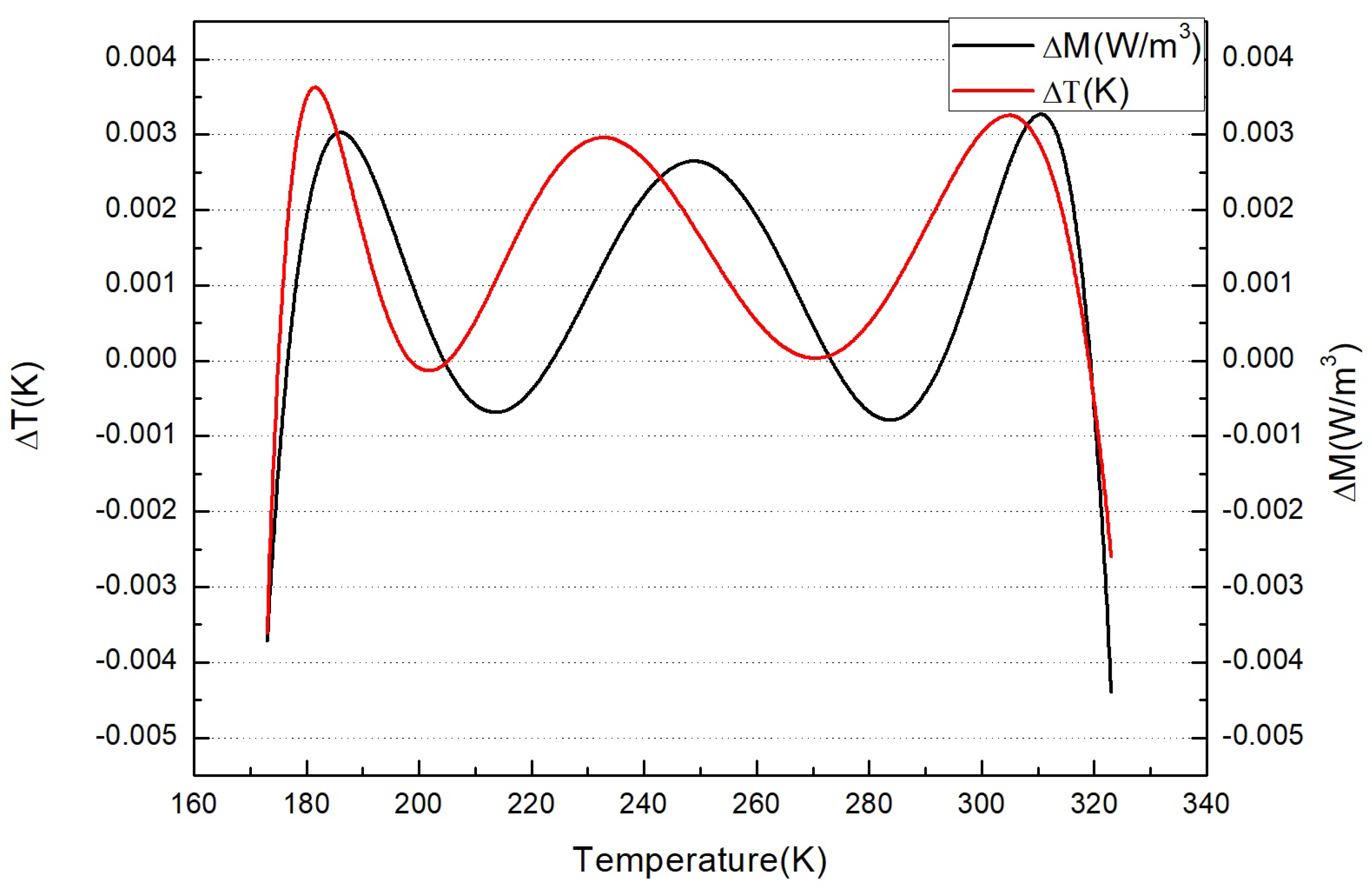

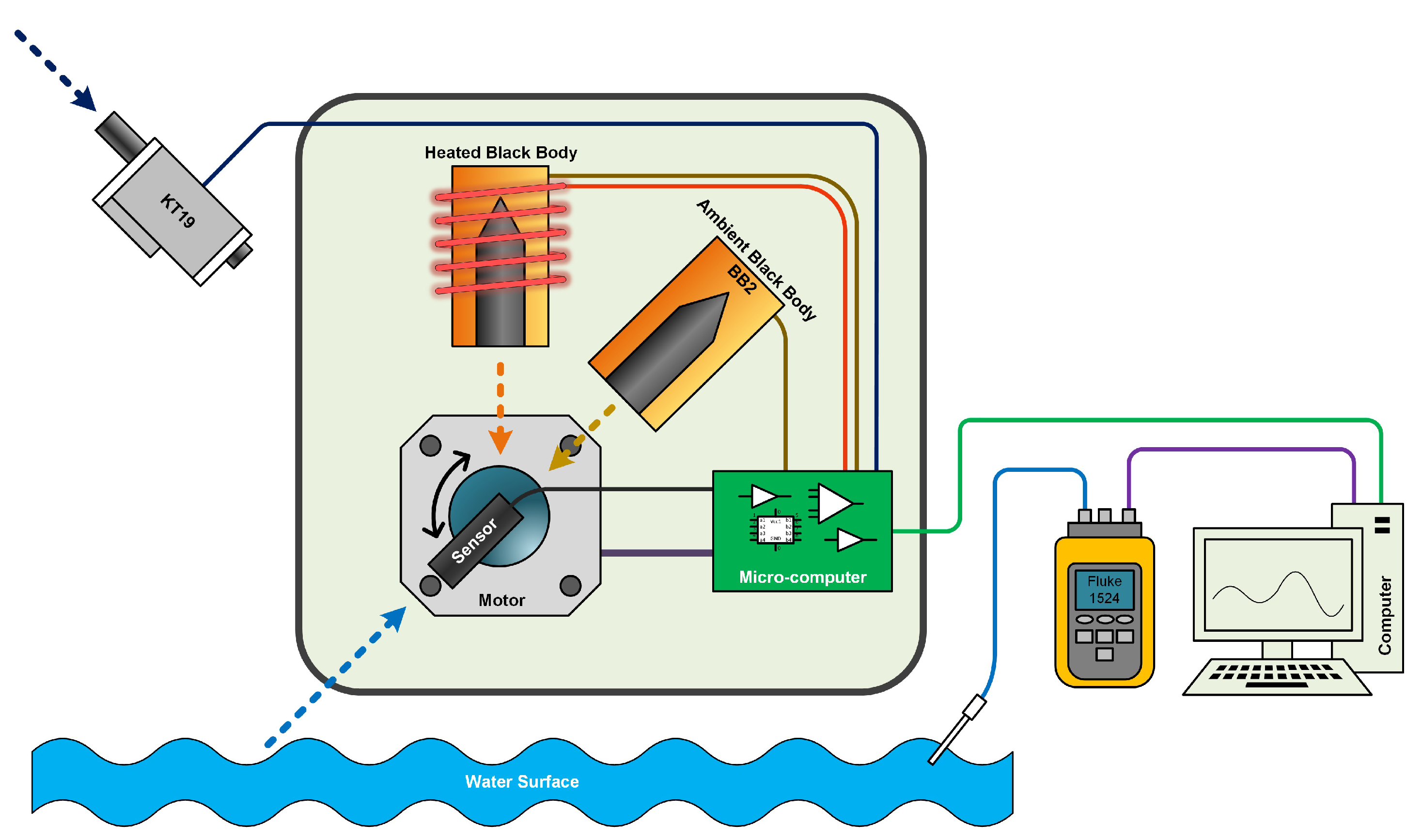
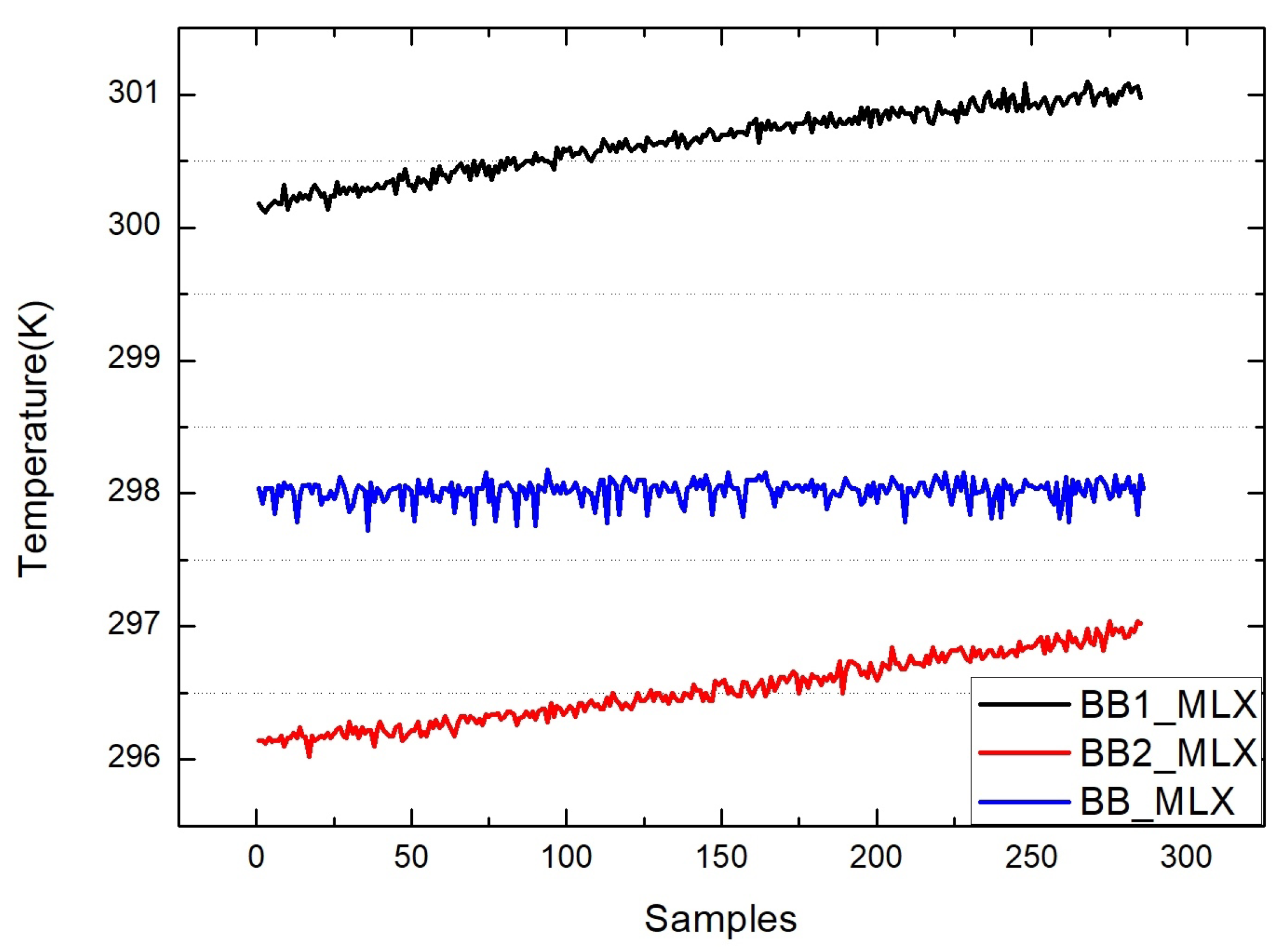
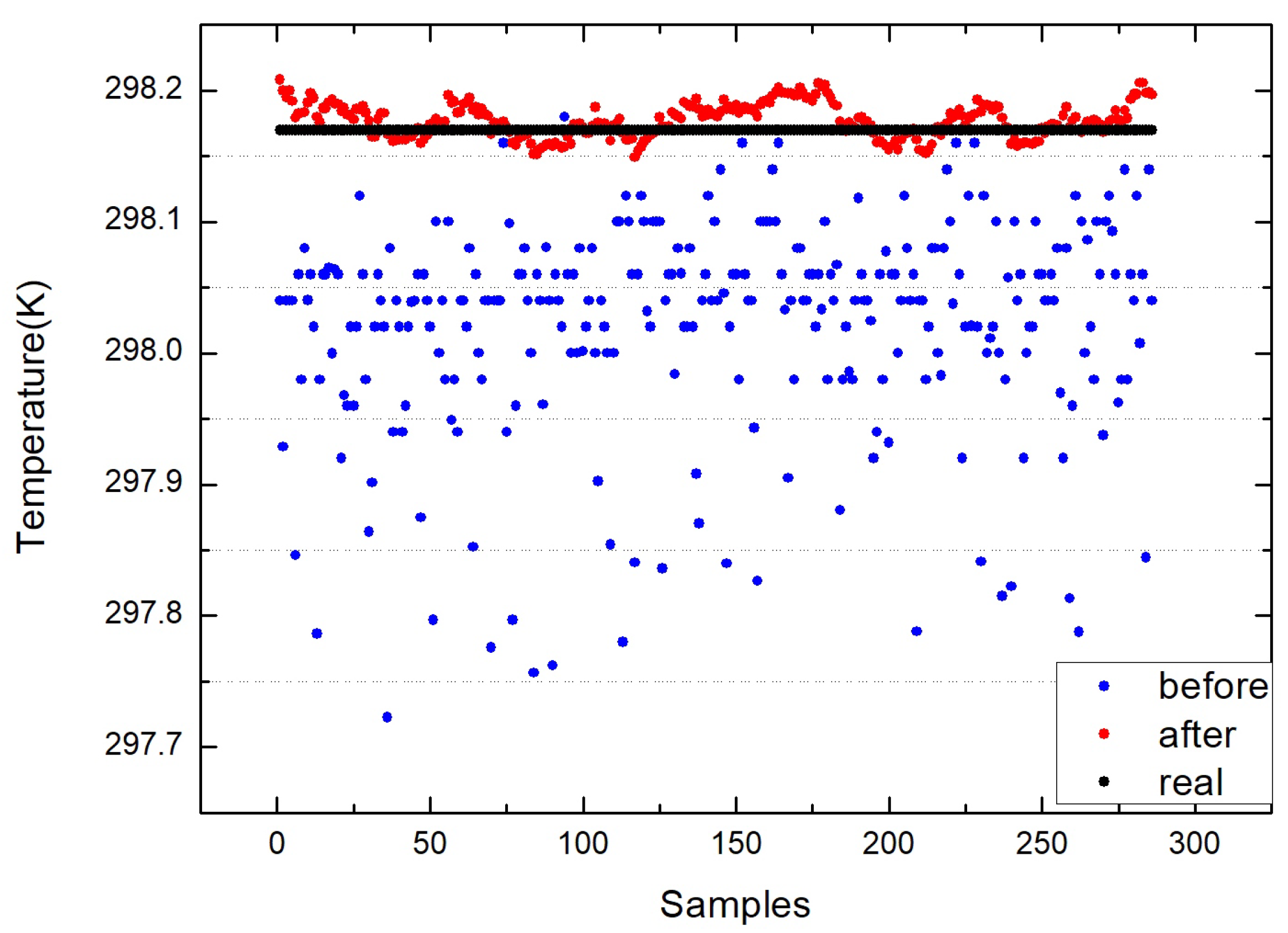
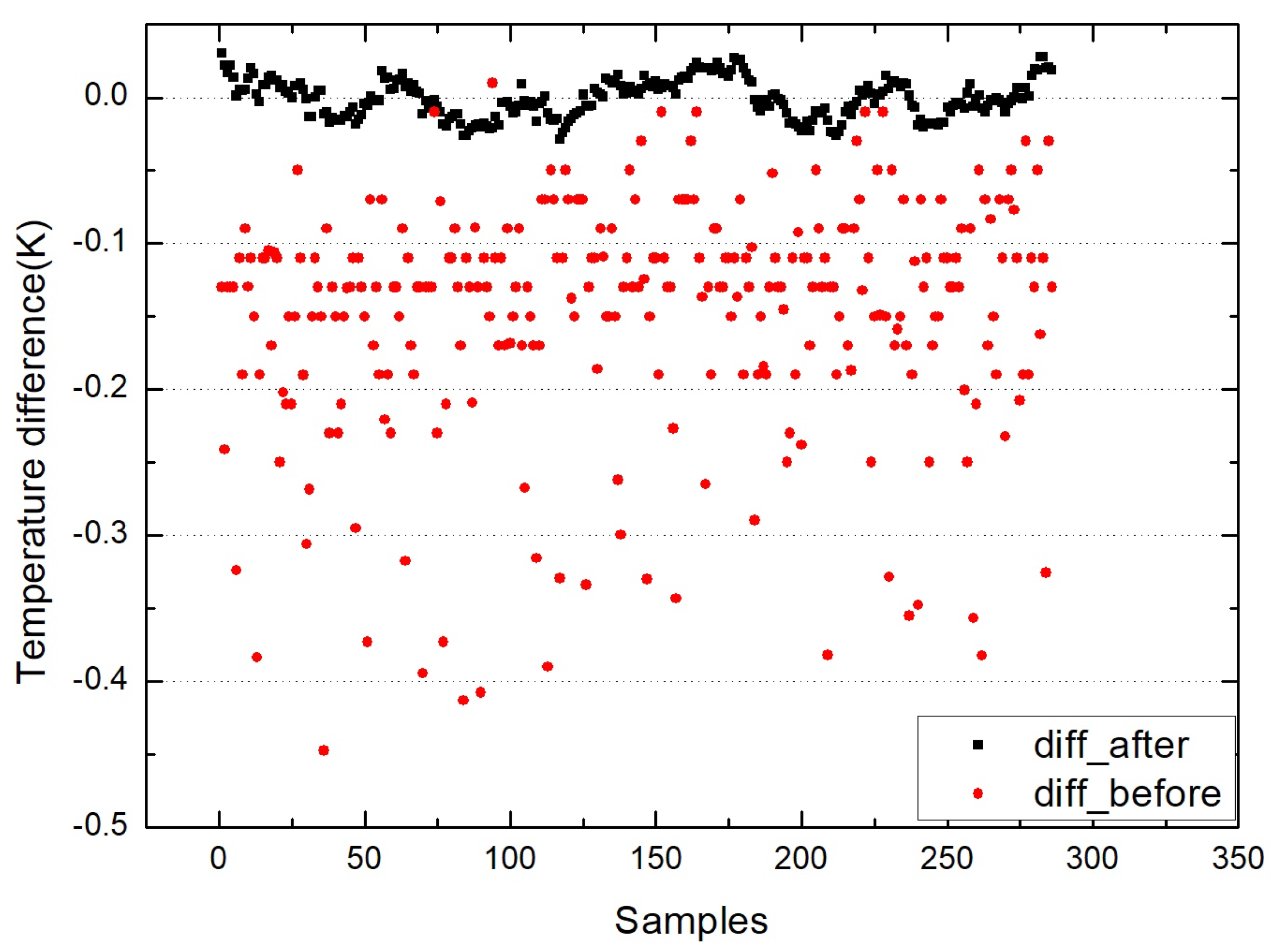
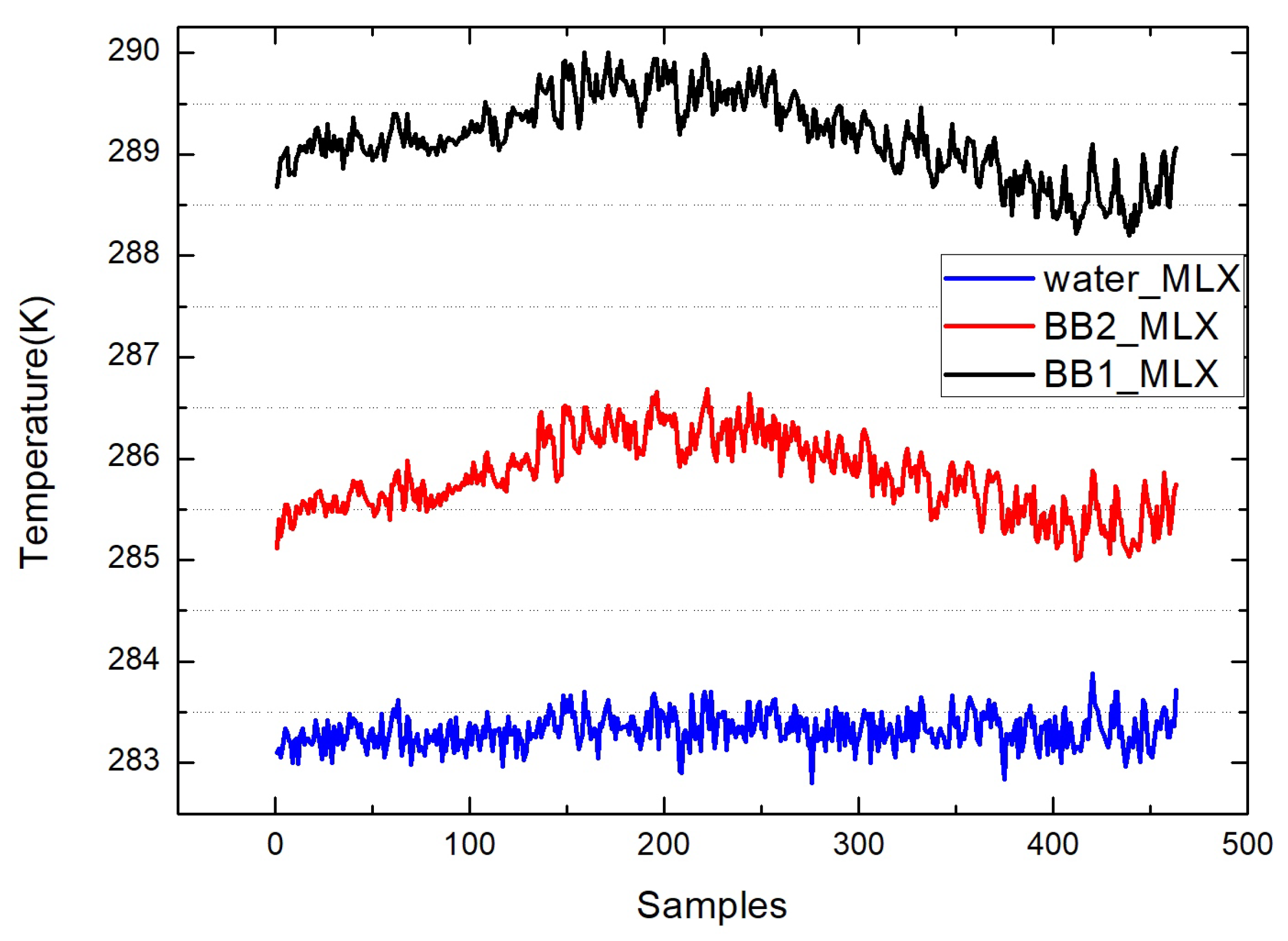
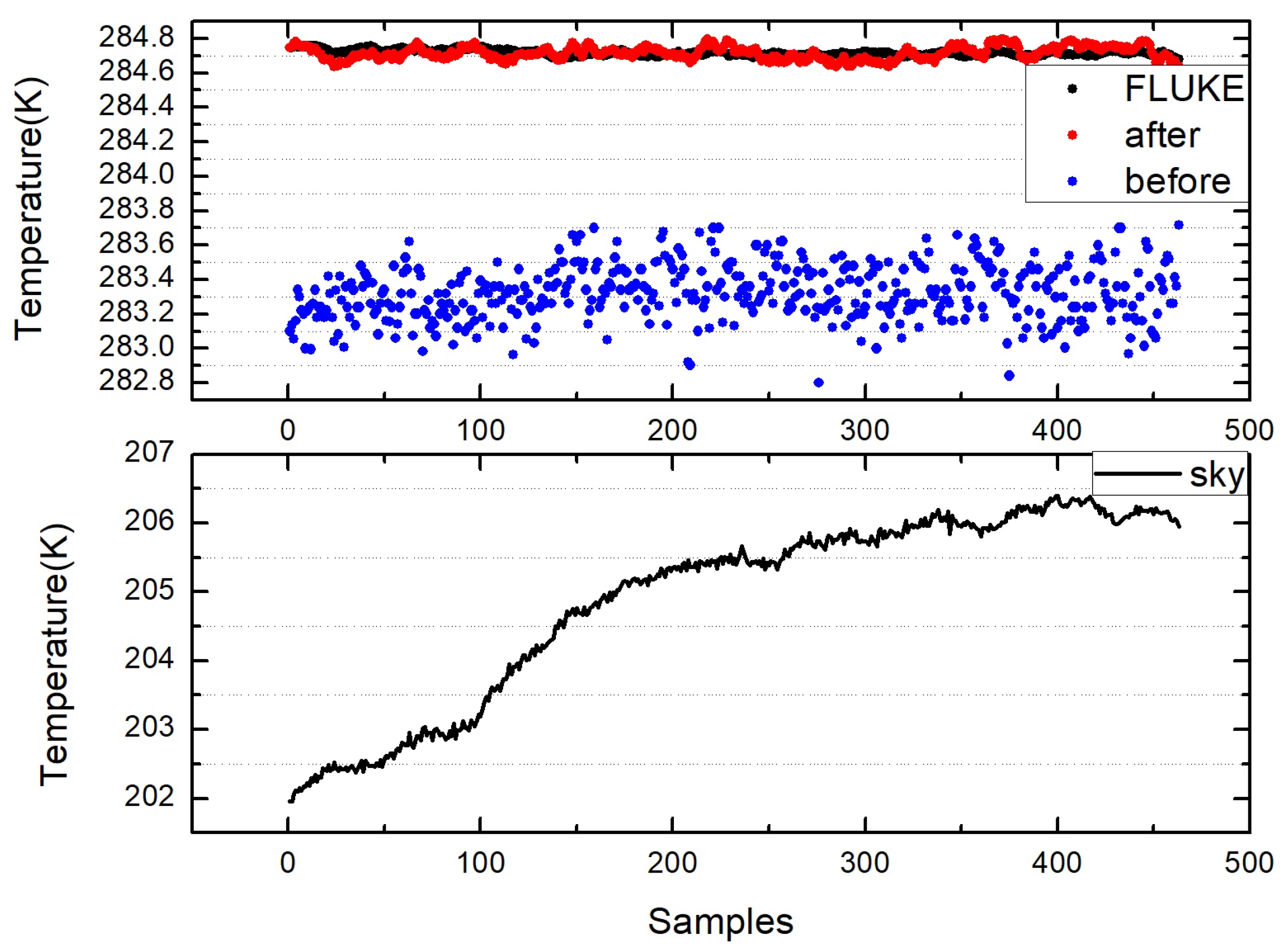
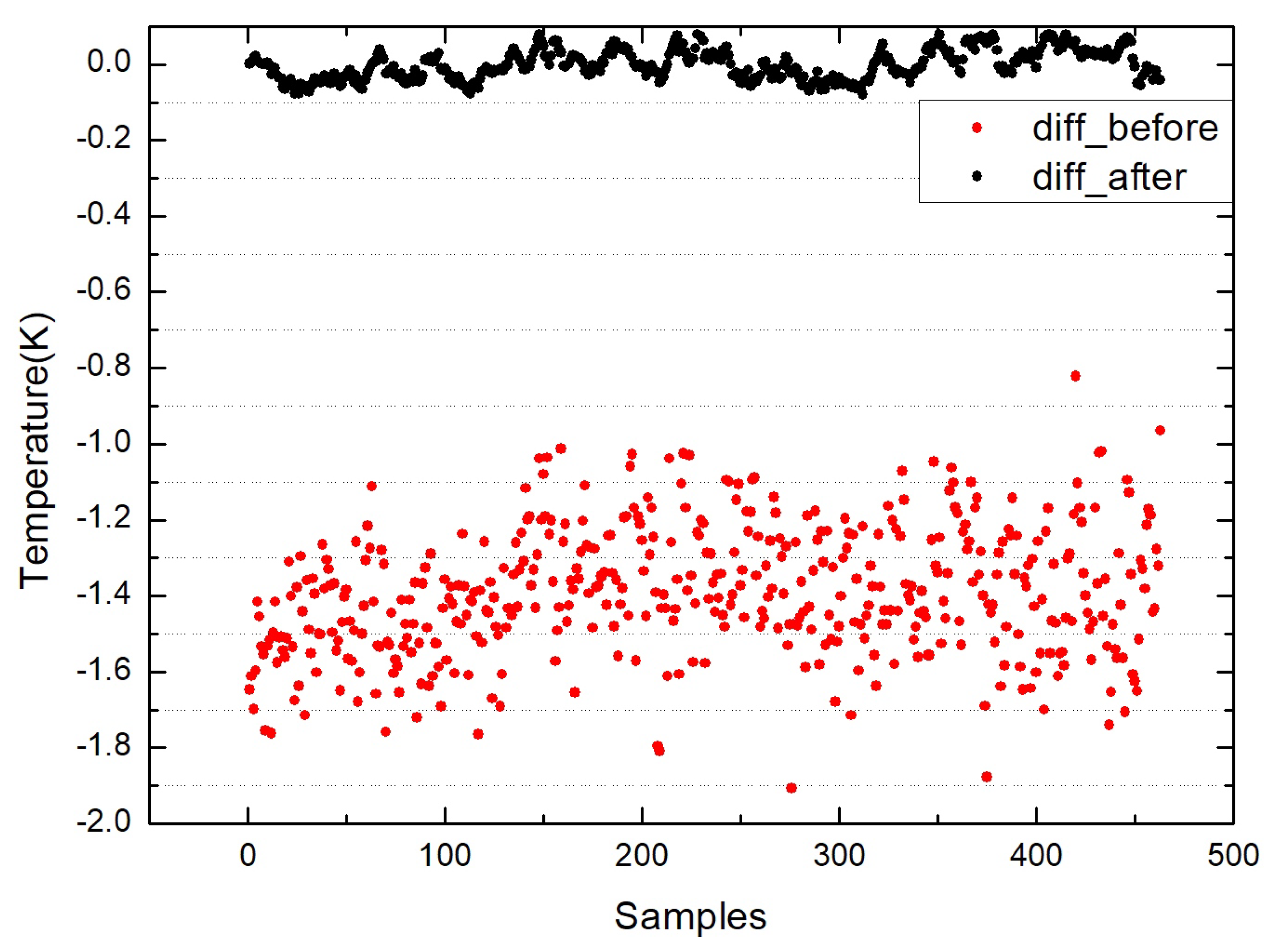
Publisher’s Note: MDPI stays neutral with regard to jurisdictional claims in published maps and institutional affiliations. |
© 2022 by the authors. Licensee MDPI, Basel, Switzerland. This article is an open access article distributed under the terms and conditions of the Creative Commons Attribution (CC BY) license (https://creativecommons.org/licenses/by/4.0/).
Share and Cite
Zhang, K.; Wang, X. High-Precision Measurement of Sea Surface Temperature with Integrated Infrared Thermometer. Sensors 2022, 22, 1872. https://doi.org/10.3390/s22051872
Zhang K, Wang X. High-Precision Measurement of Sea Surface Temperature with Integrated Infrared Thermometer. Sensors. 2022; 22(5):1872. https://doi.org/10.3390/s22051872
Chicago/Turabian StyleZhang, Kailin, and Xinyu Wang. 2022. "High-Precision Measurement of Sea Surface Temperature with Integrated Infrared Thermometer" Sensors 22, no. 5: 1872. https://doi.org/10.3390/s22051872
APA StyleZhang, K., & Wang, X. (2022). High-Precision Measurement of Sea Surface Temperature with Integrated Infrared Thermometer. Sensors, 22(5), 1872. https://doi.org/10.3390/s22051872




